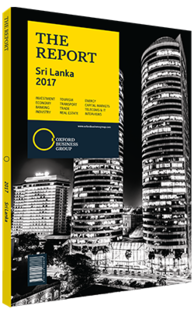Hemaka Amarasuriya, Chairman, Sri Lanka Insurance: Interview

Interview: Hemaka Amarasuriya
How has the sector demonstrated its commitment to increase insurance penetration levels?
HEMAKA AMARASURIYA: In comparison to GDP, premiums are at a low 0.5%. In emerging markets such as ours, there will be a time lag between increasing GDP and its trickle-down effect on peripheral markets. Insurance penetration for households is at 13% and for the working population it is 33%. The impact on penetration should therefore be viewed after researching all variants.
Latterly, Insurance Association of Sri Lanka has brought a vibrantly competitive industry together to campaign on a common platform for awareness of life insurance across our island nation. The 20% growth in 2015, and the same estimated in 2016, bears testimony to this positive outlook. Increasing the sales force and highlighting sales agents’ contribution to the economy should be our next collective initiative.
At a given time there will be 50,000 tourists inside our country. The Ministry of Tourism is poised to set up a mechanism similar to other Asian nations, providing health care and accidental cover for in-bound tourism. The Ministry of Education is studying a proposal to protect 4m children in government schools against critical illness, and provide outdoor medical cover. Government initiatives and support will be a tipping point for penetration to significantly increase in 2017-18.
What are the most important current growth drivers for the insurance sector?
AMARASURIYA: Looking back, the gross written premium growth rate in 2014 was a sluggish 5%. Since then, 2015 has seen growth of 20% in life insurance and 13% in general insurance, comparing favourably with other sectors. The industry challenge is to sustain or better this emerging growth trend.
Growth drivers include: customer awareness that insurance is not only for death and destruction – insurance is also for life; segregation, which leads to more companies driving the market and expanding the overall sales force; and insurance being perceived not merely as a financial service offshoot, but as a consumer product that can aggressively compete with other sectors for a fair share of customers’ wallets. Beyond that, the key to enhanced growth is the opening of branches in emerging economic regions. This will be a sine qua non for accelerated growth in 2017.
What challenges face retirement schemes?
AMARASURIYA: Insurers are handicapped by the lack of long-term investment opportunities to fund retirement plans, and the non-existence of a yield curve beyond five years deprives planning of returns for long-term instruments. Due to this reason, the insurer and the insured earn low margin spreads. Government stimulus programmes such as tax-free returns for senior citizens are needed to popularise retirement schemes.
How will a shift from fixed-capital standards to risk-based capital benefit the insurance sector?
AMARASURIYA: As the name suggests, risk-based capital is about measuring capital requirements on the risk exposure of a company, rather than on the fixed amount of capital alone. This regulatory transformation will bring about certain adjustments to the investment policies of insurance companies in order to conform to risk-based capital adequacy rules.
In computing the value of risk-based capital adequacy, there will be certain non-admissible assets, such as unlisted equities and debentures, of which values will be charged against capital in measuring the hurdle rate. This will impose certain restrictions on selecting investments, which will lead to appropriate risk management practices of paramount importance to an insurer in protecting the insured against risk by deploying capital towards risk-free investments.
The industry has positively accepted these new measures and the security of the insured is enhanced.
You have reached the limit of premium articles you can view for free.
Choose from the options below to purchase print or digital editions of our Reports. You can also purchase a website subscription giving you unlimited access to all of our Reports online for 12 months.
If you have already purchased this Report or have a website subscription, please login to continue.

